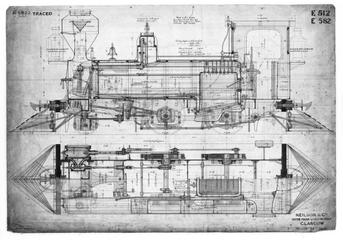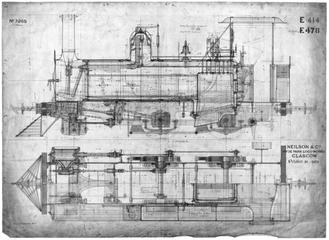
Neilson & Co.
In 1855 Neilson & Mitchell became known as Neilson & Co. Until 1858 James Reid had been the works manager at Neilson & Co. As the company turned exclusively to locomotive production, Henry Dubs who had more experience of designing & building locomotives replaced Reid. James Reid went to work for Sharp Stewart & Company in Manchester while Henry Dubs was made a partner in the Neilson & Co. business.
Initially locomotive manufacturing by Neilson & Co was primarily for local Scottish railways. However, by the 1860's the company had established a large reputation in the export business, particularly in India and later in England and Europe. Later still, the company had a presence in Africa, South America and Japan. Neilson & Co also made small industrial locomotives. By 1861 the business needed to expand and so the company moved to new purpose built premises at Springburn, Glasgow named Hyde Park Works. This works eventually became the largest locomotive works in Britain.
However, by this time the relationship between Walter Neilson and Henry Dubs was becoming increasingly strained. Dubs left the company in 1863 to set up his own company, Dubs & Co, taking key Neilson & Co staff with him. James Reid, who had gained a great deal of knowledge about locomotive building during his time at Sharp Stewart, returned as managing partner. By 1872 bitter resentment had come between Reid and Neilson regarding James Reid's option to buy Neilson out of the partnership. By 1876 Reid had become the sole proprietor, which continued until 1893 when James Reid's four sons became partners. Hugh Reid, the eldest son, became the senior partner on his father’s death in 1894. In 1898 the company changed its name from Neilson & Co. to Neilson, Reid & Co.

